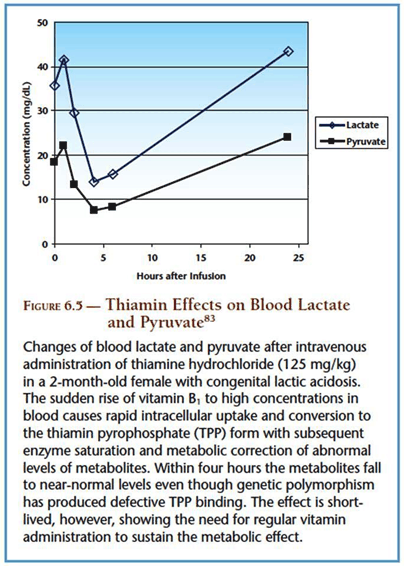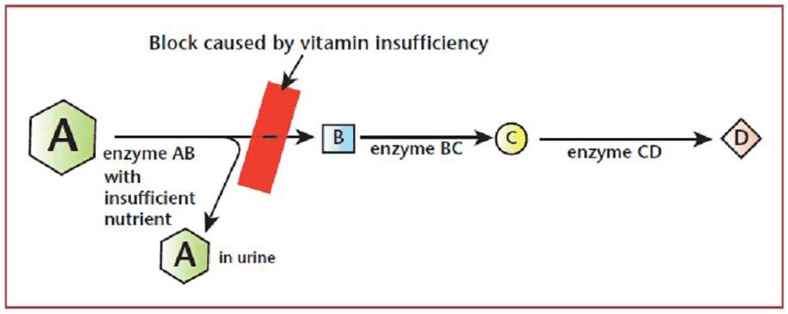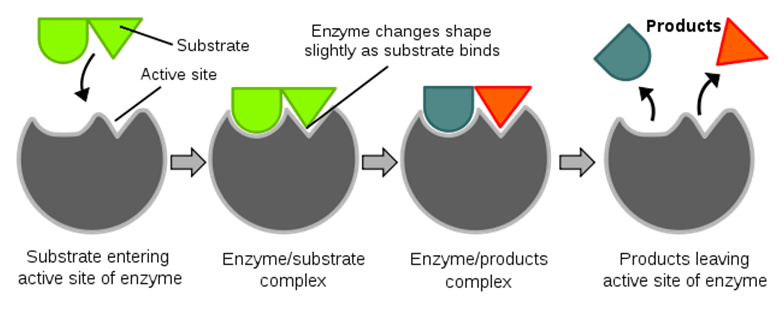 Metabolomics is the discipline studying the result of these chemical reactions, metabolites. It is considered one of the 10 disciplines with the greatest development within the next years.
Metabolomics is the discipline studying the result of these chemical reactions, metabolites. It is considered one of the 10 disciplines with the greatest development within the next years.
The information for the construction and operation of an organism is contained in genes (DNA). If genes contain an error in the information transferred, the result is diseases that exist from birth (congenital diseases). In 1966 in Yale University, a significant chapter in the history of medicine was written with the description and measurement of the first congenital metabolic disease.
Congenital metabolic diseases involve errors in the function of some gene and usually result in enzyme dysfunction.
Enzymes
Enzymes are microscopic “machines” transacting the chemical reactions occurring within the human body at great speed. One enzyme brings together or sets apart two or more substances. With the aid of enzymes, the chemical reactions are performed at a considerably greatest speed than that without the presence of the enzyme (see image).
Here we see a substance (green color) being separated with the action of an enzyme (gray color) to the two components of which it is comprised (dark green and orange). A vast variety of random chemical reactions occur within an organism. When distinct chemical substances are found together they react on random basis. A living organism contains thousands of chemical compounds that interrelate either way. This does not mean that if we mingle the chemical compounds constituting an organism we will create life.
What is it that defines the uniqueness of each organism then? Enzymes.
The property of enzymes to perform very specific reactions at amazing speed shapes the unique function of each organism.
An enzyme may perform millions of transactions in one second. The reaction of one substance with another may need – for instance – 78 years to be complete (halftime), whereas the same chemical process in the presence of an enzyme may be realized within 25 millisecond! The coexistence of different enzymes shapes distinct metabolic pathways, each of which carries out a different function.

We may take the existence of these components for granted and this was indeed true up to a few decades before. However, nowadays we know that the lack of these basic components is the main cause behind the variety of chronic diseases. When a component does not exist in sufficient quantities for the performance of a chemical chain, then we develop a biochemical reaction that may lead to a chronic health problem. Indeed, micronutrient deficiencies are closely linked to the dramatic increase of chronic diseases in recent years.
Not all of us have the same enzymes
 It is noteworthy that each one of us presents a unique enzyme activity. As people are different, tall, short, blond, brunette, etc. so are our enzymes.
It is noteworthy that each one of us presents a unique enzyme activity. As people are different, tall, short, blond, brunette, etc. so are our enzymes.
An individual’s enzyme may need 50 mg of a vitamin to function properly, whereas the same enzyme of another individual may need 150 mg of this vitamin to perform the exact same function. Therefore, under the same conditions, a person may be suffering from a disease whereas another not.
If we lived in normal conditions for our body, our body would most likely have all necessary components in its disposal, as they would be available in the environment in abundance. When an enzyme participating in a metabolic pathway does not function properly due to lack of a necessary component, the flow of chemical reactions is hindered and there is dysfunction in that specific part of metabolism. The metabolic disorder is analogous to the degree of enzyme dysfunction, which in turn is often due to the lack of the corresponding co-factor (vitamin, mineral, amino acid).
As mentioned above, when this dysfunction is due to genetic and hereditary factors, we have to do with congenital metabolic diseases that may be even life-threatening. The diagnosis and detection during the first days of a metabolic disease may save a child’s life suffering from severe enzyme deficiency or dysfunction.
In such a case, a special diet excluding the component that cannot be metabolized by this body together with the administration of the co-factors in the form of complements that will help towards an alternative pathway may save this child’s life.
The diagnosis of the metabolic diseases is performed with the use of special analytes that are able to detect very small quantities of molecules in blood and urine (High analysis mass phasmatographers, Tandem MS).
 When a metabolic pathway is inhibited due to the deficiency of an enzyme, then a metabolite is accumulated in blood and urine. By tracing different metabolites, we accurately detect which metabolic pathways are blocked and therefore which component is necessary in greater quantity for the restoration of the normal operation.
When a metabolic pathway is inhibited due to the deficiency of an enzyme, then a metabolite is accumulated in blood and urine. By tracing different metabolites, we accurately detect which metabolic pathways are blocked and therefore which component is necessary in greater quantity for the restoration of the normal operation.
Metabolic Profile
In 1971, Horning and his associates started implementing the diagnosis methods of metabolic disorders to the broader population aiming at diagnosing the metabolic causes of diseases. At that point the first customized metabolic profiles were created.
In the 70s, Linus Pauling and Arthur Robinson further developed research relating to the measurement of metabolites in humans, whereas during the 90s, the clinical implementation of Metabolomics began and in 2007 the recording of the Human Metabolome Project was completed. Since then, a discipline was developed relating to the study of metabolites and the use of tests detecting metabolic disorders. This specific discipline is called Metabolomics.
Metabolomics has diagnostic and practical applications:
- • In Autoimmune Diseases
- • In Gastrointestinal System Disorders
- • In Oncology
- • In Diabetes
- • In Autism
- • In Neurological Disorders
- • In Obesity
- • In Cardiology and in a variety of chronic health problems.
Today metabolomics is considered the most representative way to evaluate our health condition. The measurement of metabolites can provide us with the actual picture of our metabolism and allows us to restore the normal operation through diet and the supplementation of the missing co-factors.
Cheers to You!
________________________________________
Sources:
www.ncbi.nlm.nih.gov/pmc/articles/PMC285701/?tool=pubmed
Radzicka A, Wolfenden R. (1995). “Un enzima competente”. Science 267 (5194): 90-931. doi: 10.1126/science.7809611 . PMID 7809611 .
www.ncbi.nlm.nih.gov/pmc/articles/PMC2652706/
www.clinchem.org/content/17/8/802
www.nature.com/pr/journal/v10/n1/abs/pr19765a.html~~V # aff1
harvardmagazine.com/2011/05/the-fingerprints-of-diabetes-and-other-diseases
www.metametrixinstitute.org/file.axd?file=2011% 2F6% 2FPage-333.pdf
www.pnas.org/content/68/10/2374.full.pdf
www.plosone.org / article / info%%% 3Adoi 2F10.1371 2Fjournal.pone.0006386
www.ncbi.nlm.nih.gov/pubmed/20025593
www.ncbi.nlm.nih.gov/pmc/articles/PMC2676437/
content.onlinejacc.org/cgi/content/full/52/2/117
pubs.acs.org/doi/abs/10.1021/pr100101p


